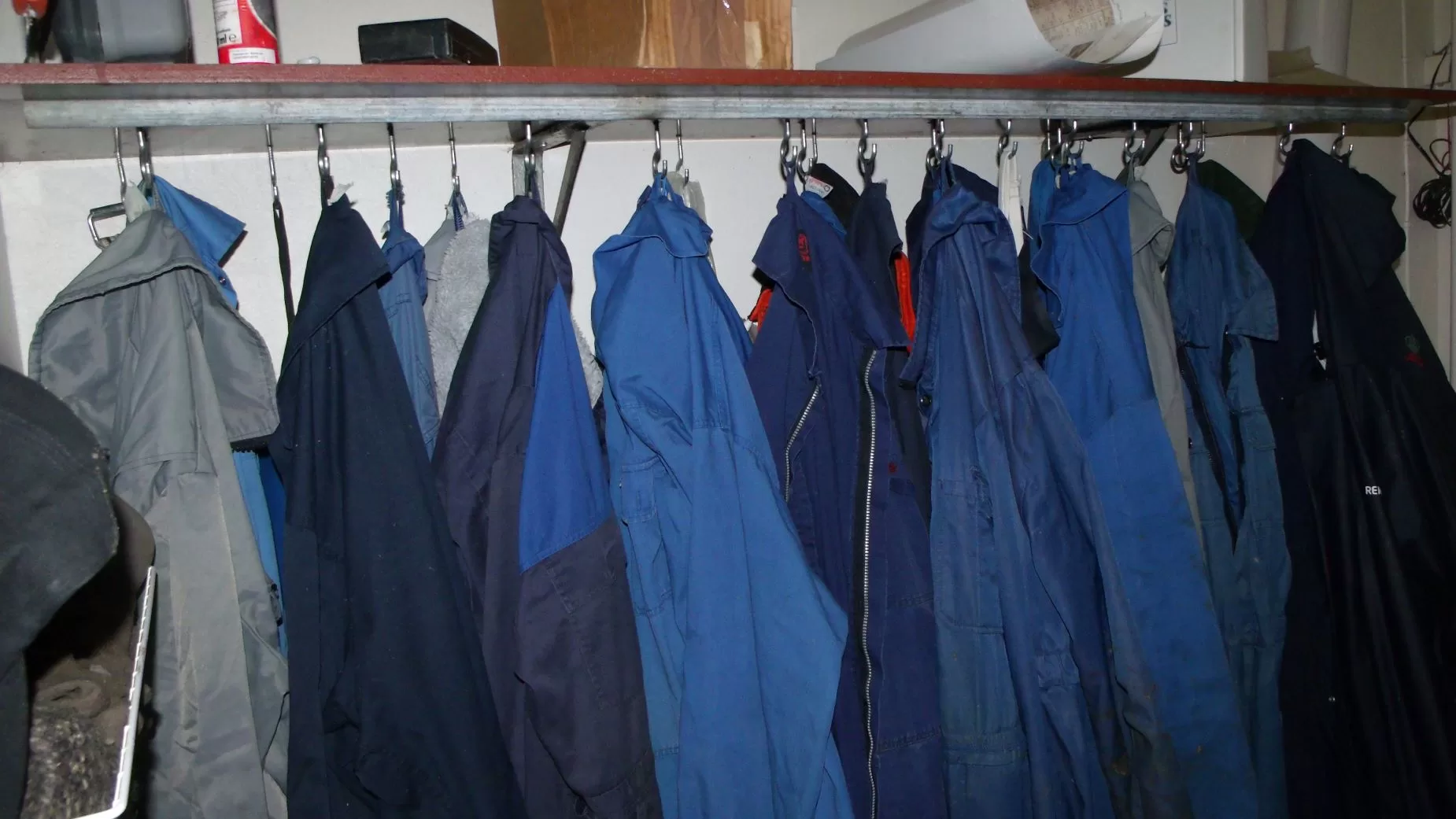This piece was originally published in 2014. Hipsters, however, have persisted since then.
*
After spending the last six months visiting Icelandic dairy farms, I’ve begun to notice many of the characteristics inherent to the lifestyle. They have coffee before and after every trip to the barn, they own an overly-enthusiastic border collie, and, without fail, wear blue coveralls called Gallis. A farmer told me that the term comes from Icelanders in Canada who met Russians wearing this type of attire. Since the Icelanders called people from that part of Russia Gallis, so was the clothing eventually named. Since then, Gallis have become the iconic clothing of Icelandic dairy farming.
Slipping on the blue coveralls again and again got me thinking about what clothing might typify the American farming experience. Unfortunately, I kept coming back to flannel.
I’ve always been bothered when farmers where flannel in movies. There are probably some in real life that still do, and that’s alright. Nonetheless, at this point it feels like an overworked cliché. And, it turns out in the fashion world we don’t even own flannel any more.
Flannel shirts were first worn by Welsh farmers in the 17th century, preferring the material because it was rugged and kept them warm. Hamilton Carhartt made his fortune retailing clothes to the working class. He brought flannel overseas to sell to anyone who made a living outdoors, from railroad workers to lumberjacks. In the 1990s, however, the flannel shirt became popularized among a new cultural subset: the grunge movement. Originating in Seattle, grunge was a type of alternative rock with angsty lyrics, distorted guitars, and musicians with unkempt appearances. It hit mainstream with bands like Nirvana and Pearl Jam, and then faded a decade later. Grunge singers stated that they hadn’t meant to make a fashion statement with the flannel shirts—they only wore them because they were cheap and durable, and not flashy like the clothes of the 80s.
In the last ten years the flannel shirt has been hijacked again, this time by a subculture very different than the farmers who first wore them: the hipsters. Usually urban residents in their 20s and 30s, the look is carefully constructed—not without irony—to make it appear the person doesn’t care about fashion trends. Common features include moppy hair, dark rim glasses, and skinny jeans. While grunge had more genuine origins with band frontmen being too lazy or apathetic to dress typically, the hipster doesn’t try hard to conceal that his look is highly calculated, even while stating the opposite. Not surprisingly, as the movement has grown, so has the scorn for it.
Perhaps the most prototypical accessory emblematic to farming around the world is the rubber boot, or wellie. Not only does it have a storied past, but has come to represent various types of social and political ideals. The name derives from the Duke of Wellington, who had his shoemaker modify one of the boots of the Victorian era into a pair that has the general shape of the one we wear to the barn. Many of the British dandies wore them to mimic their war hero, and it remained the high point of fashion past the middle of the 19th century.
Using Charles Goodyear’s technology for vulcanizing rubber, the original leather wellies were largely replaced by versions that were waterproof and cheap to manufacture. They became popular in the wet trenches during the World Wars before spreading across the globe to all forms of industry. In Ireland and the UK they tend to be green, while black in the US and New Zealand. When Khrushchev came to power in Russia and brought his “Battle of Modesty,” he politically charged wellies as being the official footwear of “socialism style.” They became worn by the whole population in place of the “capitalistic” leather shoes, which denoted western greed. In the southern hemisphere they’re known as gumboots. During the imperialization of South Africa, mine workers were not allowed to speak to each other. To communicate, they danced in their gumboots to warn of danger, make fun of their bosses, or pass information. Today, gumboot dances are a celebrated part of their culture that brings to light conditions of their past.
On some Icelandic farms the wellies are left in the barn. To get to them from the house another iconic piece of footwear is used: the dreifbýlistútta. Halfway between a shoe and a rubber boot, the dreifbýlistútta is soleless, comes up to the ankle and is extremely simple. Czechoslovakia needed something to trade Iceland for their fish and introduced them to this unique type of footwear. They were meant to slip over one’s Sunday shoes on the way to church and be taken off upon arrival. The rural people on the island loved them, and wear them on their own instead. They reminded them of the traditional soleless leather shoes they used to make from sheep skin, and they were cheap. They were also handy to wear with wool socks, slipping on and off with ease. “Dreifbýlistútta” roughly translates as “rubber sleeves for the country”—since they were looked down upon in town.
Despite what we wear, what other people think of what we wear, and how other subcultures import it into their fashion, the accessories of farming will always be dictated by the practicality required for the lifestyle. If coolness is determined by how little one cares about what they wear, maybe we’re the original hipsters. As trends rise and fade, as long as there are cows to be milked, the things farmers put on to milk them will always be around.
This article is part of The Milk House Column series, published in print across four countries and two languages. It can also be found at themilkhouse.org.
This article appeared in a similar form in Progressive Dairyman.
Ryan Dennis is the author of the novel The Beasts They Turned Away.

